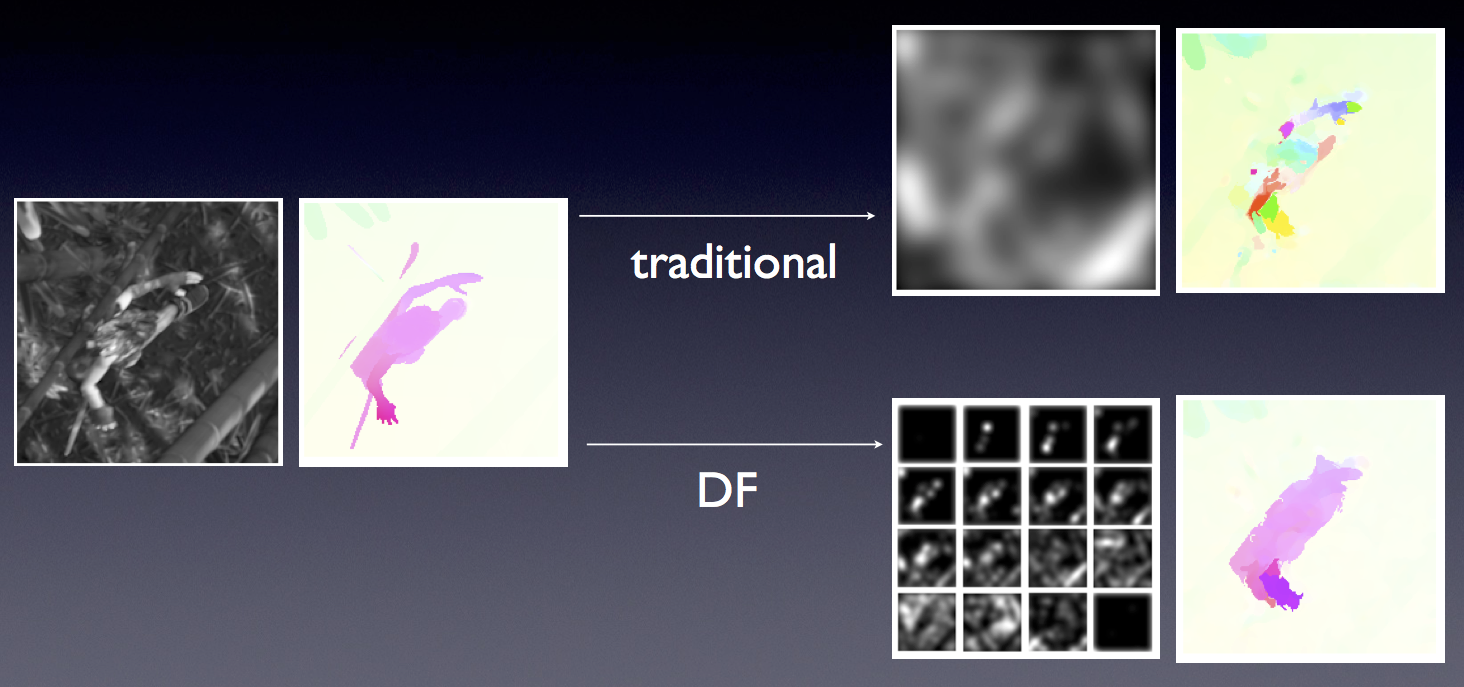Optical Flow
Overview
Large motions remain a challenge for current optical flow algorithms.
Traditionally, large motions are addressed using multi-resolution representations
like Gaussian pyramids. To deal with large displacements, many pyramid levels
are needed and, if the object is small, it may not be visible at the highest pyramid
levels. To address this we describe images using a channel representation (CR)
and replace the standard brightness constancy assumption with a new descriptor
constancy assumption, where the descriptor is the channel representation element
at each pixel. Loosely, CRs can be thought of as over-segmenting the scene into
layers based on some image feature and representing an image as a collection
of local distributions, one at each pixel. If the appearance of a foreground object
differs from the background then its descriptor will be different and it will be
represented in different layers. We can thus smooth the layers of the CR without
mixing together the foreground and background. Thus, we can apply pyramid
techniques to the CR to capture large motions without completely losing small
objects or blurring across motion boundaries. On the MPI-Sintel benchmark, we
are more accurate than the baseline for fast motions and near motion boundaries.

Faculty
Graduate Students
Collaborators
References
-
Laura Sevilla-Lara, Deqing Sun, Erik G. Learned-Miller, Michael J. Black.
Optical Flow Estimation with Channel Constancy
European Conference on Computer Vision (ECCV), 2014. (To appear)
[pdf]

